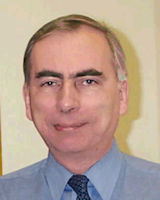
By John Slaughter
I received a very interesting enquiry from Diane Saul in Australia. She has traced her ancestry back to a John Septimus Saul who was born in 1807 to James Saul and Anne Cawood, whose children were baptised at the Burghwallis Catholic Chapel, Yorkshire. This name was familiar to me and I found that he was included as one of the criminals that I had written about in my series on Saul criminals. In my article in the August 2018 journal I wrote:
At the Middlesex Sessions in 1863 John Septimus Saul was convicted of keeping a disorderly house at 32 Windmill Street, Haymarket. He was charged jointly with Francis Jackson and Mary Wood. Saul received a sentence of 12 months imprisonment and a fine of £100, remaining in prison until the fine was paid. Wood and Jackson received three and two months imprisonment respectively. Saul was said to be the keeper of no less than 10 disorderly houses in the same neighbourhood, all of which had been shut since the prosecution commenced, on which account the sentence was less than it would otherwise have been.
What I did not know at the time is that John Septimus Saul died in prison, at the House of Correction, Coldbath Fields, Clerkenwell on 6 March 1864. His death certificate records that he died of “Pyamia after abcess of finger”. Pyamia is now commonly called sepsis. He was buried at the Brompton Cemetery on 12 March 1864. He left a will that was proved by his widow Mary, effects under £800.
The Burghwallis records only contain the baptisms of six children of James Saul and Anne Cawood, despite the name implying that John Septimus was the seventh child. A public tree on Ancestry shows that the first child was a Charles Saul who later married Sarah Haigh, albeit that no record of his birth/baptism is known to exist. I had Charles and Sarah as the head of a separate chart. When Charles married for a second time in 1839 to Elizabeth Laughton he gave his father as James Saul, a stonemason. I had made a note that he could possibly be a child of James Saul and Anne Cawood. James died in 1814 and though I have found no evidence of his occupation, all of his sons either became stonemasons or bricklayers so it is highly likely that he was a stonemason. Given this and that this identification solves the mystery of the Septimus name I have accepted it and will now merge the two charts. This will give us a combined chart of about 370 individuals.
John Saul (author of our first article on the brass in Stevington Church) brought to my attention an Australian cricketer Lawrence (known as Lawrie) Michael Sawle. He was a first class cricketer and administrator for the Australian national team. He played for Western Australia in the 1950s and 1960s before becoming a state selector up to 1980. He then became a selector and administrator for the national team which included a successful tour of England in 1989 when Australia regained the Ashes. Lawrie had been born in 1925 in Western Australia but it was his grandfather Richard ‘Dick’ Sawle who had emigrated to Australia from Cornwall some time after 1881, but before 1885 when he had married Julia Moylan in Queensland, Australia. Richard ‘Dick’ Sawle appears on one of our large Cornwall charts. He was born in 1864 at St Michael Penkivel, the tenth child of fourteen born to Thomas Sawle and Catherine Drew between 1851 and 1876. Perhaps not surprisingly the mother died in 1879. The father also died fairly young passing away on 4 January 1888, aged 58, at the residence of his married daughter Mary Ann Tregunna. Our chart goes back a couple of generations to a Richard Sawle and Mary Courtney who married on 27 August 1796 at Probus, Cornwall. [ED: There is a tree on Ancestry going back much further which we may look at more.]
